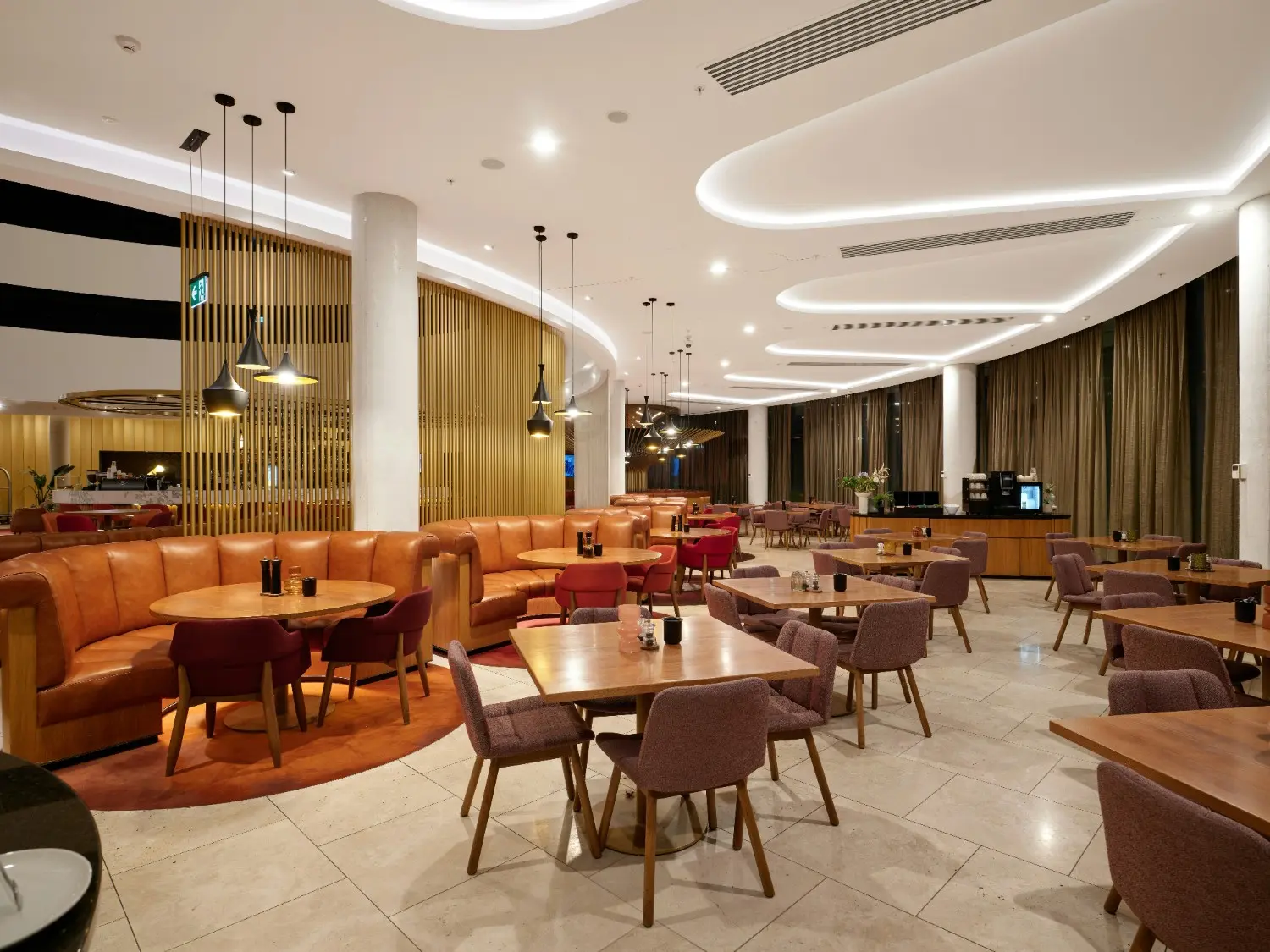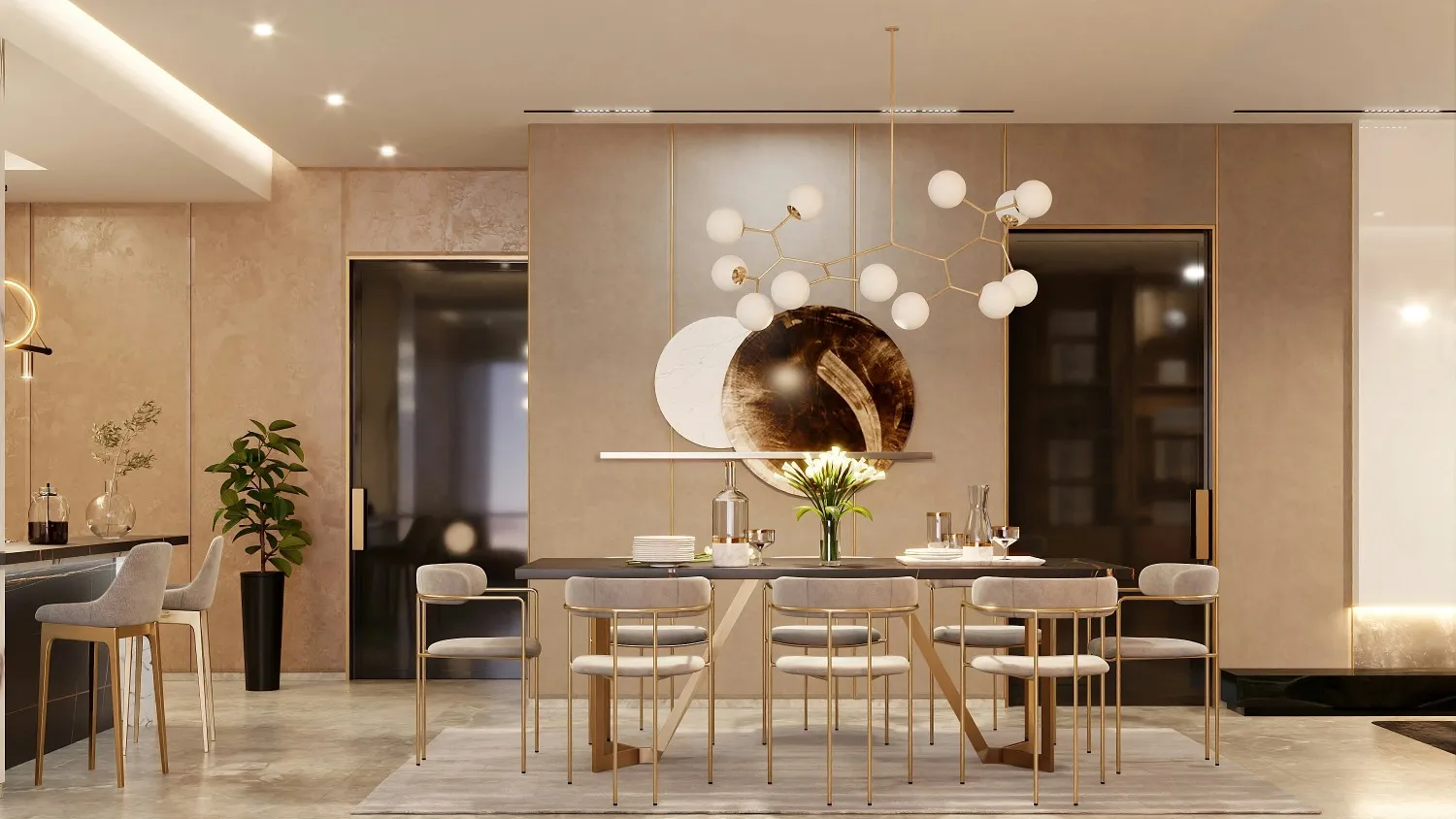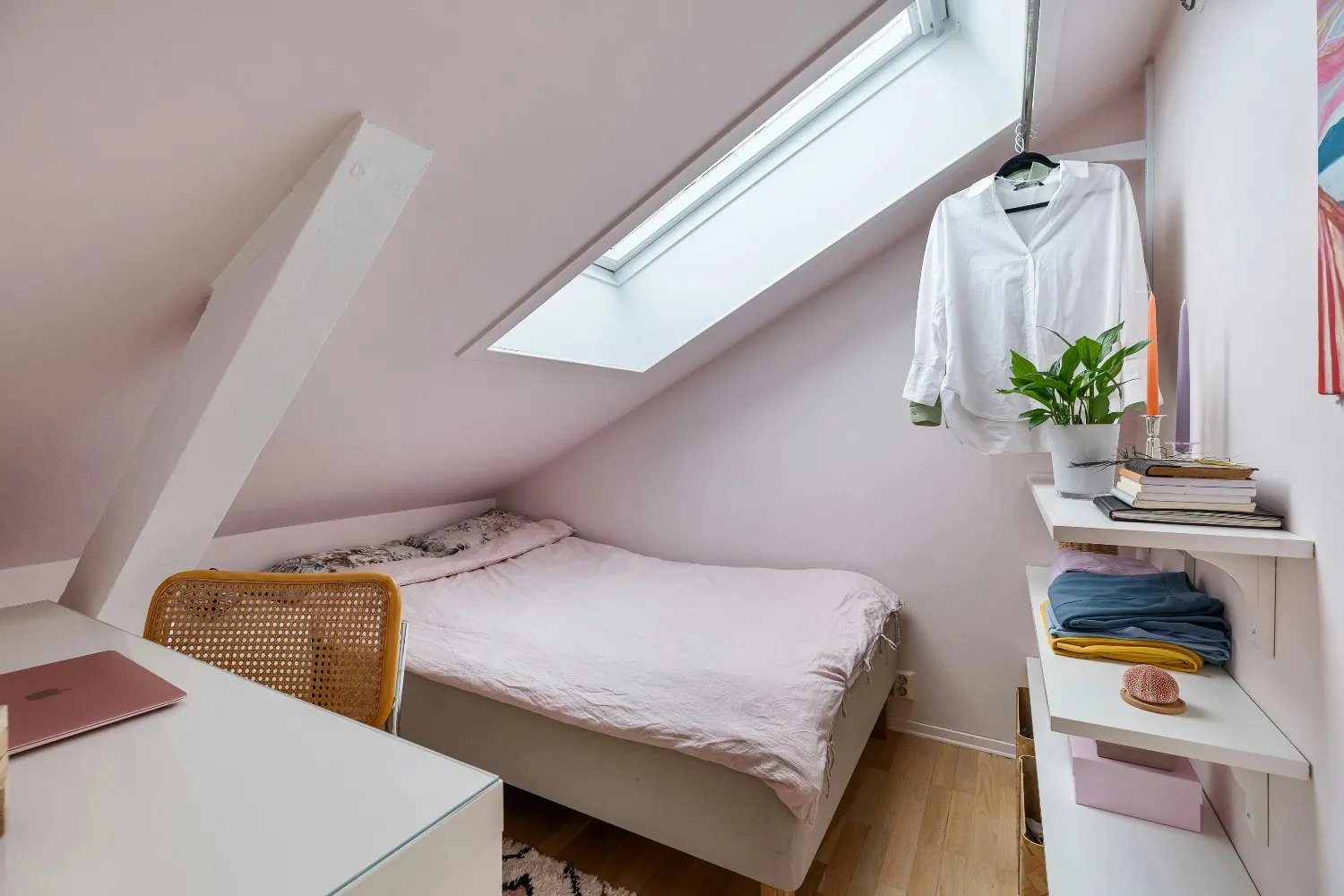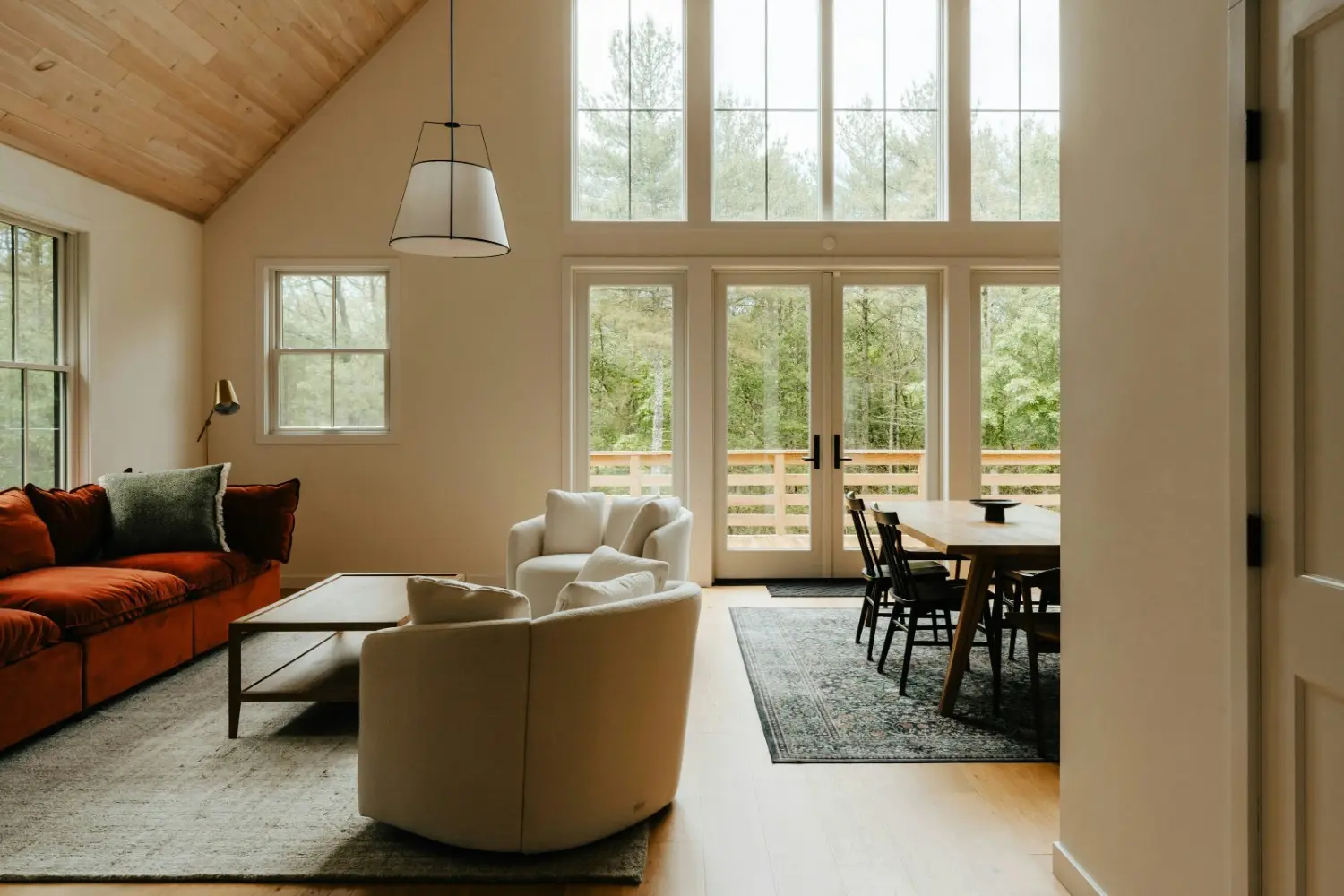Choosing between minimalist and maximalist design is not just about picking a look. It is a choice that changes how your space feels, functions, and supports your daily life. Minimalism offers calm and clarity, while maximalism delivers energy and personality. Each style comes with its own rhythm, design logic, and emotional impact. The right fit depends on how you live, the size of your space, and the atmosphere you want to create. In this guide, we break down minimalist vs maximalist design in an approachable, easy-to-understand way so you can see the strengths of each style and find the one that truly feels like home.
Highlights
- Minimalist vs maximalist design shapes how a space feels, functions, and supports daily life, influencing mood, comfort, and overall usability.
- Choosing the right style depends on your lifestyle, personality, space constraints, and how much maintenance you’re comfortable with, ensuring the design works long term rather than just looking good.
- Hybrid interiors are becoming increasingly popular, blending minimalist clarity with curated maximalist expression, giving homeowners the freedom to enjoy both calm simplicity and meaningful visual character.
Minimalist interior design is built on the philosophy that simplicity creates clarity. Rather than filling a room with décor and accessories, minimalism focuses on what truly matters, the essential elements that support comfort, function, and visual ease. The style intentionally removes excess so that each piece has purpose, and every decision contributes to a sense of order and calm.
A well-known UCLA study found that 75% of families reported their home clutter caused elevated stress levels, showing how strongly our environment affects our mental state.
At its core, minimalism is about intentional living. It encourages people to rethink what they bring into their space and prioritize items that add meaning, function, or long-term value.

Key principles of minimalist interior design include:
- Function-first layouts that consider how people move, work, and live in the space.
- Clean, linear forms with simple silhouettes, smooth surfaces, and well-defined geometry.
- Neutral, nature-inspired palettes such as soft whites, light greys, warm beige, and natural wood tones that create visual harmony.
- Amplified natural light, using airy window treatments, reflective surfaces, and open circulation paths.
- Quality over quantity, choosing durable materials like oak, stone, linen, and matte metals that age gracefully and reduce long-term clutter.
Minimalism also connects closely to emotional well-being. Its uncluttered aesthetic reduces visual stress, making it easier to focus, unwind, or transition between tasks. This is why minimalist design is especially effective in:
- Small condos and micro-apartments, where visual simplicity creates the perception of more space.
- Open-plan homes, where streamlined forms prevent chaos and keep sightlines clean.
- Modern workplaces, where clarity and organization support productivity.
- Wellness-focused environments, such as yoga studios, clinics, and spas, where calm is essential.
Ultimately, minimalist interior design works best in environments that benefit from openness, low maintenance, and thoughtful restraint. It creates spaces that feel breathable, balanced, and timeless, a perspective that becomes especially clear when comparing minimalist vs maximalist approaches, where purposeful living and simplicity guide every design decision.
What Is Maximalist Interior Design?
Maximalist interior design is a celebration of personality, creativity, and visual richness. Instead of quieting a space, maximalism embraces the idea that more can truly be more when curated with intention. It layers color, pattern, texture, artwork, and meaningful objects to create interiors that feel alive, expressive, and deeply personal.
A recent trend report found that search interest for maximalist interiors rose by 112% year-over-year, reflecting how strongly homeowners are gravitating toward bold, expressive spaces.
Where minimalism removes, maximalism adds, but with purpose. Every piece contributes to atmosphere, storytelling, and emotional impact. A maximalist space feels collected over time, not assembled overnight.

Key principles of maximalist interior design include:
- Bold, saturated color palettes that bring drama and energy to a room. Jewel tones, deep monochromes, and color-blocked schemes are common tools.
- Pattern layering and mixing, such as pairing florals with geometrics or stripes with organic prints to create contrast and rhythm.
- Rich, diverse textures, ranging from velvet, leather, and boucle to stone, brass, mirrors, and woven surfaces. Sensory depth is essential.
- Meaningful displays of art, books, travel finds, vintage pieces, and accessories, curated to reflect personal history and style.
- A sense of eclectic harmony, where each corner feels intentional, warm, and full of character rather than chaotic.
True maximalism is not clutter. It is curation. The style only works when items are arranged thoughtfully and tied together through color, scale, repetition, or theme. Everything has a purpose, even if the room feels abundant.
This design approach thrives in:
- Large homes that benefit from visual layering and dramatic focal points
- Creative studios and artistic workspaces where inspiration is key
- Boutique hotels and hospitality environments where atmosphere influences guest experience
- Retail spaces that lean on storytelling and immersive design
For people who love self-expression, storytelling through objects, and interiors that feel emotionally vibrant, maximalism becomes a joyful and energizing way to live. It allows personality to shine through every finish, surface, and vignette, transforming a space into something truly unforgettable, a striking contrast in the minimalist vs maximalist conversation, where bold character takes center stage.
See more: Top 10 Design Company Interior in Canada for Modern Spaces
Minimalist vs Maximalist: Key Differences

Aesthetic Expression
Minimalism is rooted in restraint. It prioritizes simplicity, visual quiet, and intentional editing. Every element serves a purpose, and the empty space around an object is just as important as the object itself.
Maximalism, on the other hand, thrives on expression. It invites bold choices, meaningful collections, and artistic layering. Instead of creating silence, maximalism creates visual storytelling, interiors that feel vibrant, curated, and alive.
Space and Layout
Minimalist layouts emphasize open circulation, clean lines, and generous breathing room. Furniture is placed to support natural flow, and negative space is used strategically to reduce visual clutter and improve functionality, principles that clearly define one side of the minimalist vs maximalist spectrum, where intention and simplicity guide every spatial decision.
Maximalist layouts are more dynamic. They often incorporate layered arrangements, gallery walls, mixed seating, and curated vignettes that draw the eye around the room. Rather than focusing on emptiness, maximalism prioritizes depth and richness.
Color and Material Use
Minimalism typically features soft neutrals, monochromatic palettes, and natural materials like oak, linen, stone, and matte finishes. The goal is harmony, cohesion, and a sense of calm continuity from room to room.
Maximalism embraces saturated color, bold accents, metallics, statement patterns, and luxurious textures. Velvet, marble, brass, lacquer, patterned wallpaper, and dramatic artwork often play central roles, creating a layered sensory experience, a vivid counterpoint in the minimalist vs maximalist discussion, where richness and expressive detail take precedence over restraint.
Emotional Impact
Minimalist interiors often evoke clarity, mindfulness, and relaxation. They reduce sensory overload, support focus, and create a soothing atmosphere, especially helpful in small homes, condos, or workspaces.
Maximalist interiors evoke energy and creativity. They inspire curiosity, self-expression, and imagination. People who thrive on visual stimulation or artistic environments often find maximalism emotionally uplifting.
Maintenance
Minimalist spaces are generally easier to maintain because fewer objects mean less cleaning, less dusting, and fewer styling decisions. The simplicity itself supports efficiency.
Maximalist spaces require more frequent upkeep. Layered surfaces, collections, and decorative objects need ongoing styling, cleaning, and coordination to keep the space feeling intentional rather than cluttered.
Minimalist vs Maximalist for Small Spaces
Small spaces require smart design decisions, which is why the minimalist approach often works so well. Clean lines, open pathways, and uncluttered surfaces help compact rooms feel larger than they are. Minimalism reduces visual noise, improving flow and making everyday routines easier. For condos, micro-suites, and studio apartments, this simplicity can dramatically improve livability, especially when considering the minimalist vs maximalist spectrum, where thoughtful restraint can make small spaces feel more open and functional.

However, maximalism can still thrive in small spaces when executed with discipline. Instead of filling the room, it focuses on strategic impact. For example:
- A single bold feature wall can add personality without overwhelming the layout.
- A curated shelf of meaningful objects introduces story and texture while remaining organized.
- Vertical styling and height-based layers lift the eye upward, keeping the floor open and preventing the room from feeling crowded.
The key is intentionality. In compact homes, it often works best to build minimalist foundations, neutral tones, clean silhouettes, and optimized storage, and then layer select maximalist accents to bring character without sacrificing comfort. This balanced approach is one many top interior design companies rely on to ensure small spaces stay both expressive and highly livable.
Minimalist vs Maximalist for Large Spaces
Large homes, loft-style condos, and spacious commercial interiors offer far more flexibility. Maximalism can fully come to life in these environments because the extra square footage absorbs visual richness easily. Patterned rugs, statement art, large-scale lighting, mixed textures, and layered furnishings have room to breathe without feeling chaotic. Open-concept layouts can handle bold styling choices that might overwhelm smaller spaces.

Minimalism also shines in larger interiors, but it requires careful design balance. Without thoughtful proportions, oversized rooms can feel sparse or under-furnished. To maintain warmth and texture, minimalist large spaces often incorporate:
- Oversized artwork to anchor expansive walls
- Sculptural or architectural lighting that draws focus
- High-quality natural materials such as stone, wood, and wool to add depth
- Purposeful zoning to prevent the space from feeling empty or disconnected
Both styles can succeed beautifully in large spaces, the difference lies in how you manage scale, proportion, and visual weight, especially when navigating the minimalist vs maximalist spectrum and choosing which approach best complements the architecture and overall atmosphere.
Can You Mix Minimalist and Maximalist Styles?
Yes. This is one of the most popular design approaches today. Many interiors blend the calmness of minimalism with the personality of maximalism.
How to combine the two styles successfully:
- Keep foundational elements neutral and clean.
- Introduce maximalist accents such as artwork, textiles, or focal furniture.
- Use color restraint to prevent visual overload.
- Apply patterns in controlled areas such as an entryway or powder room.
Mixed-style interiors work especially well in modern condos, single-family homes, and creative workspaces.
How to Choose the Right Style for Your Lifestyle
Selecting between minimalist and maximalist design begins with understanding how you live, what environments support your well-being, and how your space needs to function day to day. While both styles can be beautiful and practical, each serves a different type of lifestyle and personality, making the minimalist vs maximalist choice a reflection of what truly feels authentic and supportive for you, especially when guided by an interior design studio that can translate those preferences into a space that genuinely fits your life.
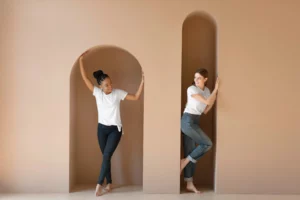
Personality and Emotional Comfort
Your emotional response to your environment is one of the most important indicators of which style fits you.
- Minimalism resonates with people who feel their best in calm, quiet, and orderly spaces. If visual simplicity helps you think clearly or unwind after a long day, the minimalist approach offers long-term comfort.
- Maximalism fits those who draw energy from texture, color, storytelling, and creative expression. If you enjoy surrounding yourself with meaningful objects, art, and layered details, maximalism allows your personality to shine through your interiors.
Daily Habits
Think about your natural habits and how your routines interact with your environment.
- Minimalism is ideal for individuals who prefer tidiness, streamlined routines, and low-maintenance living. If you naturally keep surfaces clean or enjoy owning fewer items, minimalism supports that rhythm.
- Maximalism suits people who enjoy arranging decor, rotating collections, styling bookshelves, or discovering unique pieces over time. This approach embraces layers and celebrates personality-driven curation.
Functional Needs
Your household structure and space usage also guide which design style will work best.
- Families or busy households often gravitate toward hybrid interiors, minimalist foundations for clarity and safety, paired with maximalist accents for warmth and personality.
- Businesses and commercial spaces tend to choose based on brand identity. Minimalism supports modern, calm, high-efficiency environments (wellness clinics, offices, salons), while maximalism excels in experiential settings like boutique retail, hospitality, and creative studios.
Maintenance Preferences
Different design styles require different levels of upkeep.
- Minimalism is generally easier to maintain. Fewer objects mean faster cleaning, simpler organization, and fewer surfaces that collect dust.
- Maximalism requires more frequent styling, cleaning, and rotation of items to keep the space visually cohesive rather than cluttered.
Understanding how much time you realistically want to invest in maintenance is a crucial part of choosing your design direction.
Design Tips for Minimalist Interiors
Minimalism is most successful when it balances simplicity with comfort. To enhance the experience:
- Choose multi-functional furniture such as benches with hidden storage, expandable tables, or modular seating to maximize utility without adding clutter.
- Stick to a cohesive color palette across the entire home. Soft neutrals, warm woods, or muted tones create harmony and make rooms feel more open.
- Use built-in or hidden storage solutions to keep visual surfaces clean. Concealed cabinetry, under-bed drawers, and closet organizers support a clutter-free lifestyle.
- Maximize natural light through sheer window treatments, reflective finishes, and strategic placement of mirrors to create brightness and flow.
Design Tips for Maximalist Interiors
Maximalism shines when it’s intentional, curated, and balanced. To execute it successfully:
- Start with a color anchor, a primary tone or palette that grounds the room. This prevents the space from feeling chaotic even with multiple patterns.
- Mix patterns thoughtfully by varying scale (small, medium, large) and repeating colors or motifs to maintain visual cohesion.
- Curate meaningful collections rather than placing items randomly. Group objects by theme, shape, or color to tell a visual story.
- Use layered lighting such as sconces, lamps, and directional spotlights to highlight textures, artwork, and focal points that define the space.
Watch more: 10 Best Interior Design Firms in Canada Leading the Industry
How Ark & Mason Helps You Choose the Right Style
At Ark & Mason, choosing between minimalist and maximalist design isn’t just a conversation about aesthetics, it’s a strategic process grounded in function, lifestyle, and long-term usability. Whether the project is a residential interior design refresh or a commercial interior design fit-out, our team helps clients make confident, informed decisions that align with both vision and performance.
We begin by understanding how you live, work, and interact with your environment. From there, we explore how each design direction, minimalist, maximalist, or a tailored hybrid, can enhance your routines, support your goals, and elevate your overall experience. This thoughtful discovery process helps clarify where you fall within the minimalist vs maximalist spectrum, ensuring the final approach feels authentic to your lifestyle. Our designers use a combination of creative exploration and technical precision to ensure your chosen style is not only beautiful but also practical, scalable, and buildable.
Ark & Mason supports clients through a structured, end-to-end process that includes:
- Space Planning & Workflow Strategy:We assess circulation patterns, functional needs, and spatial constraints to determine which style best enhances comfort and usability.
- Custom Concept Development: We build minimalist, maximalist, or blended design concepts that reflect your personality, brand identity, and operational goals.
- 3D Visualization & Renderings: Clients can preview how each style will look and feel in their actual space, from clean, calm layouts to layered, expressive environments, before making final decisions.
- Material, Finish & Furniture Selection: We source materials that align with your chosen style, ensuring durability, consistency, and long-term performance across both residential and commercial applications.
- Construction Documentation & Coordination: Once the design direction is finalized, our team prepares clear drawings, specifications, and schedules, then coordinates with contractors to ensure every detail is executed accurately.
Our approach is proven across a wide range of Ark & Mason case studies, including Headicure Head Spa, Knead Massage Studio, and The Salon Beauty Spa, where our team successfully blended functional layouts with distinct stylistic identities. These projects demonstrate how minimalist clarity or maximalist richness, or a thoughtful blend of both, can transform real spaces into memorable experiences.
Whether you lean toward serene simplicity, expressive layering, or a balanced middle ground, Ark & Mason creates a cohesive, buildable plan that captures your style while delivering real-world performance, durability, and long-term value.
FAQs: Minimalist vs Maximalist
1. Is minimalist design cheaper than maximalist?
Usually yes, but not always. Minimalist interiors often require fewer décor pieces, but they rely heavily on high-quality materials, clean detailing, and intentional craftsmanship. Maximalism may involve more items, but those items can vary in price. Ultimately, cost depends on finishes, furniture choices, and the level of customization in the space.
2. Can I switch from minimalism to maximalism later?
Absolutely. The easiest way to do this is by building a strong minimalist foundation, clean walls, simple furniture, and a cohesive palette, and gradually introducing color, pattern, and décor. This makes it simple to shift styles over time without renovating the entire space.
3. Can my partner prefer one style and I prefer another?
Yes. Many couples blend both approaches through hybrid design. Minimalist structure provides calm and clarity, while maximalist accents add personality and warmth. Designers often merge the two by using simple layouts with expressive color, artwork, or textures that satisfy both preferences.
4. Is maximalism going out of trend?
Not at all. Maximalism continues to evolve into more sophisticated, curated formats. Instead of clutter, today’s maximalism focuses on meaningful collections, layering, and storytelling. This version feels intentional and modern rather than overwhelming.
5. Can minimalism feel too empty?
It can, but only when scale, warmth, and proportion are overlooked. With proper planning, such as layered lighting, natural textures, and appropriately sized furniture, minimalist spaces feel inviting rather than sparse. Professional design ensures balance between simplicity and comfort.
Conclusion
Minimalist vs maximalist design is not a competition. It is a choice rooted in your personality, your routines, and the way you want your space to feel. Whether you crave simplicity, expression, or a mix of both, the best design is the one that supports your lifestyle and helps your space work harder for you. If you are ready to explore interior design options with clarity and confidence, the Ark & Mason team is here to help you plan, visualize, and build a space that truly fits. Contact us now!


